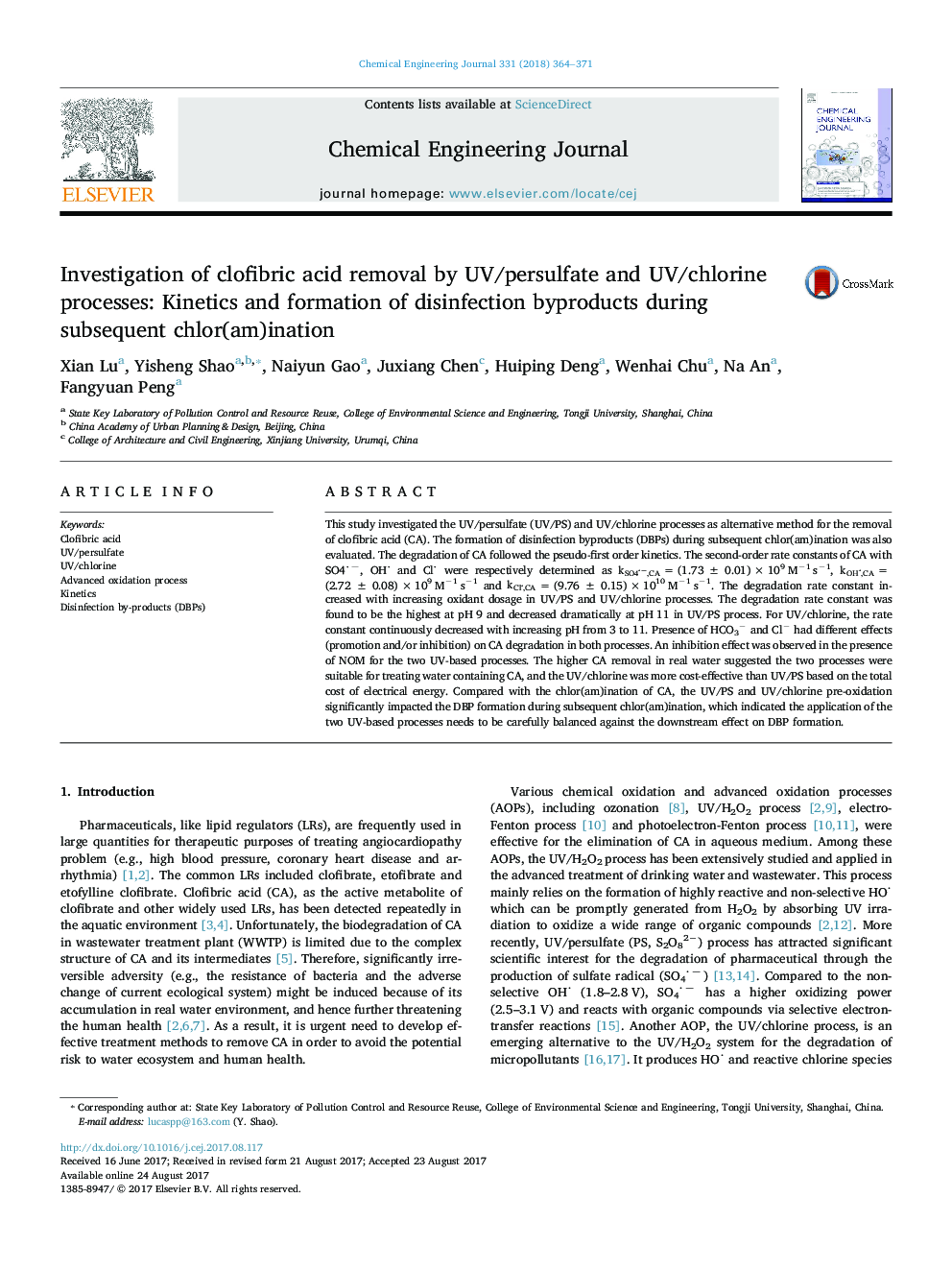| Article ID | Journal | Published Year | Pages | File Type |
|---|---|---|---|---|
| 4762792 | Chemical Engineering Journal | 2018 | 8 Pages |
â¢Degradation of clofibric acid (CA) was studied by UV/PS and UV/chlorine.â¢The second-order rate constants of CA with SO4â, OH and Cl were determined.â¢Impacts of different conditions including oxidant dosage, pH, Clâ and HCO3â were discussed.â¢UV/chlorine was found to be more cost-effective.â¢The disinfection by-products (DBPs) formation was evaluated during followed chlor(am)ination.
This study investigated the UV/persulfate (UV/PS) and UV/chlorine processes as alternative method for the removal of clofibric acid (CA). The formation of disinfection byproducts (DBPs) during subsequent chlor(am)ination was also evaluated. The degradation of CA followed the pseudo-first order kinetics. The second-order rate constants of CA with SO4â, OH and Cl were respectively determined as kSO4-,CA = (1.73 ± 0.01) Ã 109 Mâ1 sâ1, kOH,CA = (2.72 ± 0.08) Ã 109 Mâ1 sâ1 and kCl,CA = (9.76 ± 0.15) Ã 1010 Mâ1 sâ1. The degradation rate constant increased with increasing oxidant dosage in UV/PS and UV/chlorine processes. The degradation rate constant was found to be the highest at pH 9 and decreased dramatically at pH 11 in UV/PS process. For UV/chlorine, the rate constant continuously decreased with increasing pH from 3 to 11. Presence of HCO3â and Clâ had different effects (promotion and/or inhibition) on CA degradation in both processes. An inhibition effect was observed in the presence of NOM for the two UV-based processes. The higher CA removal in real water suggested the two processes were suitable for treating water containing CA, and the UV/chlorine was more cost-effective than UV/PS based on the total cost of electrical energy. Compared with the chlor(am)ination of CA, the UV/PS and UV/chlorine pre-oxidation significantly impacted the DBP formation during subsequent chlor(am)ination, which indicated the application of the two UV-based processes needs to be carefully balanced against the downstream effect on DBP formation.
